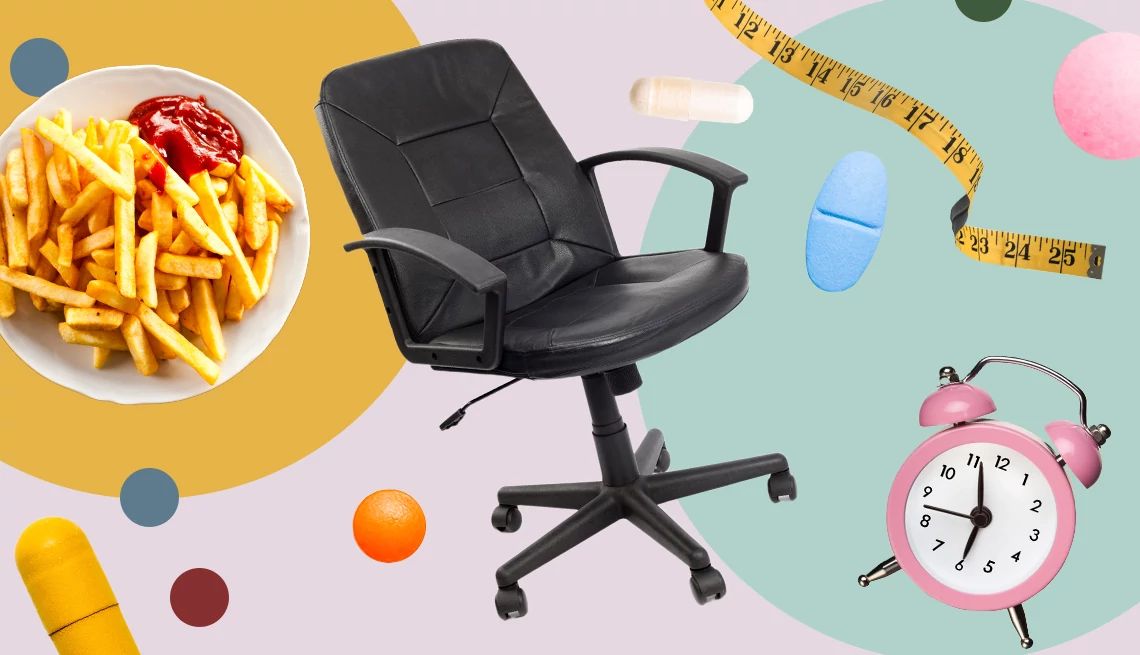
- Select a language for the TTS:
- UK English Female
- UK English Male
- US English Female
- US English Male
- Australian Female
- Australian Male
- Language selected: (auto detect) - EN
Play all audios:
Other conditions, like arthritis, can make exercise more difficult, while vitamin deficiencies — such as insufficient B12, which might lead someone to eat more and indiscriminately
(including unhealthy foods) in response to hunger cues — can lead to weight gain, says Sukhpreet Singh, M.D., regional medical director for weight management and obesity medicine at Henry
Ford Health in Detroit. (As with depression, nutritional deficiencies cut both ways: Some people gain pounds, while others lose weight.) GENETICS, HEREDITY, AND WEIGHT GAIN: PREDISPOSED BUT
NOT PREDESTINED Behavior, environment and genetics all play a role in whether a person becomes overweight or obese. As for the obesity epidemic in the U.S., which has only gotten worse in
recent decades, “we’re pretty sure it’s due to the environment, because genes don’t change that quickly,” Apovian says. Much of the change is a result of decreased activity and access to all
those calorie-dense foods, Kidambi adds. This is where what’s called epigenetics comes into play. Put another way, our environment and the choices we make (as well as what our parents do
when we’re younger) can modify the way our genes are expressed. For example, what a person eats can even alter the bacteria in their gut, and that, in turn, can lead to genetic changes that
are linked to obesity. That said, having a family history of obesity doesn’t mean you’re predestined to be overweight or obese. But you should probably be more vigilant about making
lifestyle changes that help you lose pounds and maintain a healthy weight. DIET AND WEIGHT GAIN: UNDERSTANDING THE WHY Getty Images You probably know that you should be getting the majority
of your calories from nutrient-rich plant-based foods, such as dark leafy greens, nuts, beans and berries. But you may still have a proportion problem, with highly processed carbs tending
to take over your plate. In addition to capping total calories, re-proportioning your plate can help with losing pounds and maintaining a healthy weight. Half the food on your plate should
be nonstarchy vegetables (think of salad as the entrée); one quarter should be lean protein, like skinless chicken or fish (or beans if you prefer a nonanimal protein); and one quarter
carbs, like whole wheat pasta or brown rice. The MyPlate guide from the U.S. Department of Agriculture can be helpful in determining “customized” portions. But maybe you already have a firm
handle on all this, and your eating still doesn’t square with dietary advice. In that case, you need to dig into why you’re eating the way you are — or, for that matter, not getting enough
exercise, Singh suggests. Ask yourself, “Is it an internal barrier, or is it a time barrier? Is it financial? Is it physical limitations?” says Singh. Working an overnight shift, being tired
or stressed, or facing other challenges can greatly influence eating. So think more deeply about what’s behind how — not just what — you eat to make more sustainable changes. LIFESTYLE AND
ACTIVITY: A SEDENTARY LIFE CAN LEAD TO WEIGHT GAIN More than one-fourth, or 27.5 percent, of adults 50 and older are inactive, reporting they engaged in no physical activity outside of work
in the past month, according to the Centers for Disease Control and Prevention. Compare that with the standing recommendation to get at least 150 minutes per week of moderate-intensity
exercise, such as brisk walking, and it’s clear why this is a huge factor in America’s obesity epidemic. Singh again suggests his patients dig deeper to understand why they’re not able or
willing to be active.





:max_bytes(150000):strip_icc():focal(1179x279:1181x281)/Ratched_Season1_Episode3_00_14_04_18RC-bc75556288484f50b8adfb1f31e0ad73.jpg)
